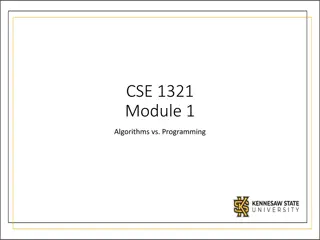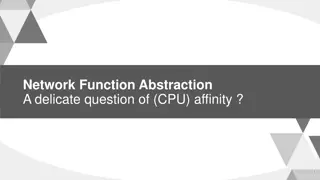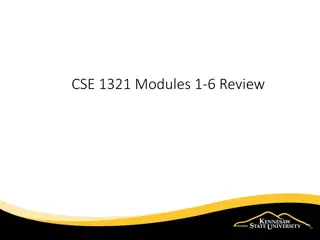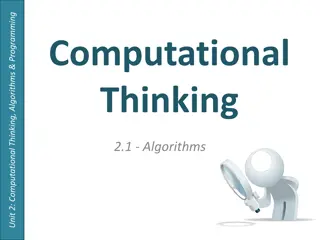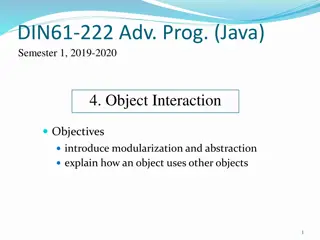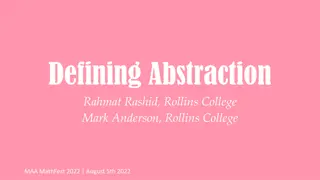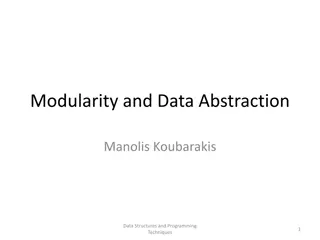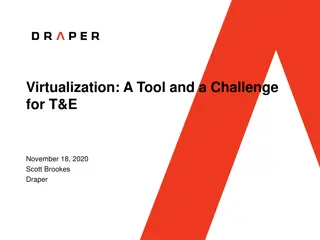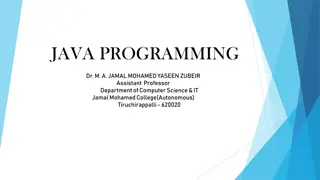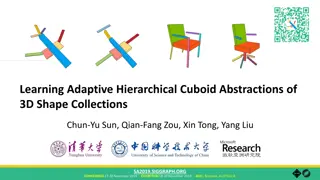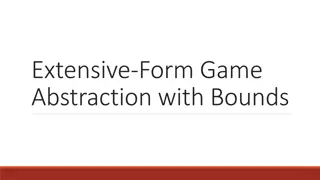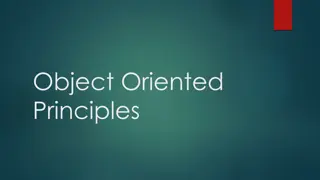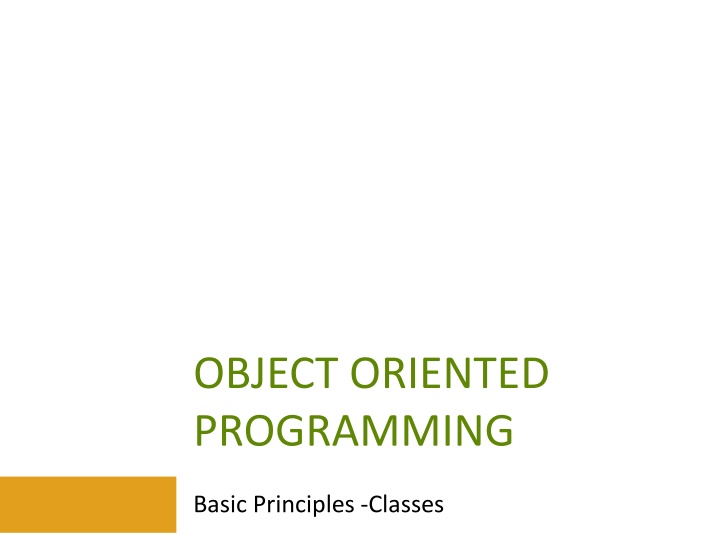
Object Oriented Programming - Basic Principles of Abstraction and Encapsulation
Explore the fundamental principles of object-oriented programming including Abstraction and Encapsulation. Learn how to choose relevant attributes and methods for your application, and understand the concept of self-containing objects. Discover the importance of refining essential characteristics and hiding internal details to build efficient and secure systems.
Download Presentation

Please find below an Image/Link to download the presentation.
The content on the website is provided AS IS for your information and personal use only. It may not be sold, licensed, or shared on other websites without obtaining consent from the author. If you encounter any issues during the download, it is possible that the publisher has removed the file from their server.
You are allowed to download the files provided on this website for personal or commercial use, subject to the condition that they are used lawfully. All files are the property of their respective owners.
The content on the website is provided AS IS for your information and personal use only. It may not be sold, licensed, or shared on other websites without obtaining consent from the author.
E N D
Presentation Transcript
OBJECT ORIENTED PROGRAMMING Basic Principles -Classes
Object Oriented Basic Principles Page 2 Abstraction Encapsulation Information Hiding Message Passing Overloading Inheritance Overriding Polymorphism Dynamic Binding Abstraction, Encapsulation, Information hiding, Message passing and Overloading are covered in this course. Inheritance, Polymorphism, Overriding and Dynamic binding are discussed in CSC 113.
1-Abstraction Principle 3 Choose only attributes and methods relevant to your application A Person can have attributes : name, age, length, weight For a banking application, length and weight has nothing to do So you should ignore these . Choose only what is relevant and needed for application
1-Abstraction Principle Page 4 Functionality Abstraction Modeling functionality suffers from unnecessary functionality may be extracted, or alternatively, an important piece of functionality may be omitted. Functionality abstraction is the process of determining which functionality is important. Data Abstraction In order to process something from the real world we have to extract the essential characteristics of that object. Data abstraction is the process of: Refining away the unimportant details of an object, Keeping only the useful characteristics that define the object. Example Person Data : name , age , weight , ID Person Functionality : walk , sleep , deposit money , withdraw money , register For a bank application , what data and functionality we should use ?
2- Encapsulation Principle 5 A concept of Self-containing An object is like a black box. The internal details are hidden. Encapsulation is the practice of including in an object everything it needs hidden from other objects. The internal state is usually not accessible by other objects.
2- Encapsulation Principle Page 6 Abstraction involves reducing a real world entity to its abstraction essential defining characteristics. Encapsulation extends this idea by also modeling and linking each data of an entity to the appropriate functionality of that entity. OOP makes use of encapsulation to ensure that data is used in an appropriate manner. by preventing from accessing data in a non- intended manner (e.g. asking if an Integer is true or false, etc.). Integer addition division modules subtraction Through encapsulation, only a predetermined appropriate group of operations may be applied (have access) to the data. multiplication
Encapsulation Gives Classes Page 7 Encapsulation is the OO principle that allows objects to contain the appropriate operations that could be applied on the data they store. My phone stores: My contacts, Missed calls etc. My phone may perform the following operations on the data it contains: Edit/Update/Delete an existing contact Add a new contact Display my missed calls. etc. Place data and the operations that act on that data in the same class.
3- Information Hiding Principle 8 Information hiding - internal structure is hidden from their surroundings Behaviors (methods) and information (attributes) are represented or implemented internally Functionality and behavior characterized by interfacing operations This is achieved by the use of classes and the access modifiers
3- Information Hiding Principle 9 Limit access to data only to internal operations that need it. OO classes hide the data as private data members and use public accessor operations to get at it. The scope of the data is limited to the class. Information hiding protects: data items (attributes). the internal structure of a class. implementation details of a class.
Access Modifiers 10 Access encapsulation and information hiding principle by preventing unauthorized or accidental access to attributes and methods. Through which you can control how the methods and attributes can be accessed: modifiers aid to achieve the
Access Modifiers (cont.) 11 Accessibilities options public Accessible to all private Accessible to containing class protected Accessible to containing or derived classes (will be described in CSC113) In most cases: fields are private or protected, and methods are public.
UML Representation for Object Oriented systems Page 12 UML (Unified Modeling Language) is a graphical representation scheme used for modeling object oriented systems An OO system is designed using this language in a form of diagrams, with one standard set of graphical notations
What is a Class Diagram? 13 A class diagram is a graphical representation that describes the types of objects in the system and the various kinds of relationships that exist among them. A central modeling technique that runs through nearly all object-oriented methods. The richest notation in UML.
UML Representation of a Class UML represents a class with a rectangle having 3 compartments stacked vertically. The top compartment shows the class's name. The middle compartment lists the attributes. The bottom compartment lists the operations: methods or services. Links between different classes define relationships (will be covered in CSC113) ClassName - att1: dataType1 - - atti: dataTypei Attributes + m1( ): dataType1 + ... + mj( ): dataTypej Methods (Services) Page 14
UML Representation of a Class (UML Class Diagram) 15 UML uses three symbols to represent the visibility of the class members. + : mentions that the member is public. These are the Access Modifiers - : mentions that the member is private. # : introduced in the CSC 113. ClassName - att1: dataType1 - - atti: dataTypei Attributes + m1( ): dataType1 + ... + mj( ): dataTypej Methods (Services)
How to create UML 16 from problem definition: 1. Identify all (relevant) nouns and verbs 2. From List of nouns ,select objects 3. Identify data component for each object 4. From list of verbs, select operation
Ex: UML Class Diagram 17 Problem Statement: Write a program to input the length and width of the rectangle, and calculate and print the perimeter and area of rectangle. Nouns : length , width, rectangle, perimeter , area Verbs : print , calculate

